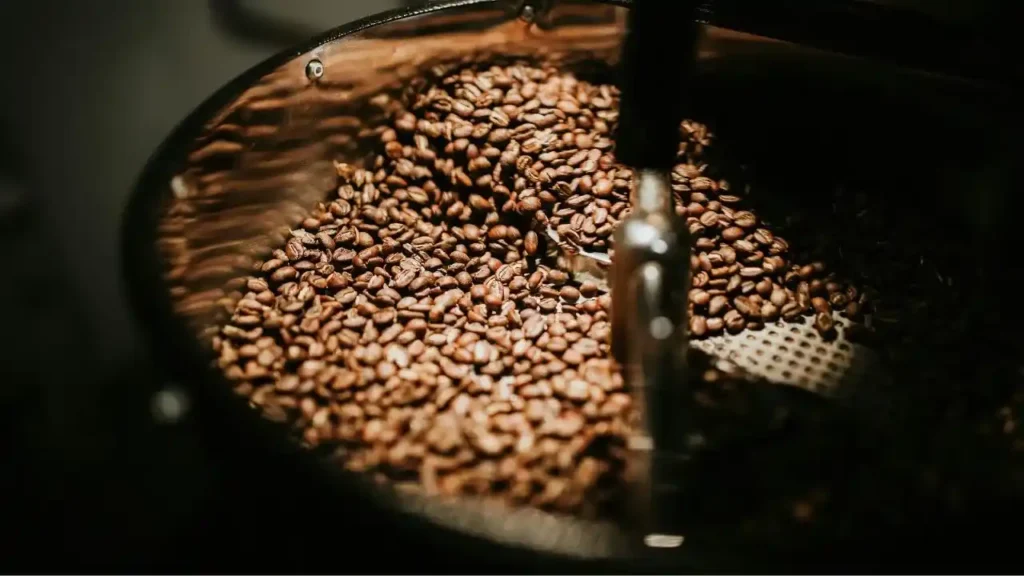Monsooned coffee beans are a rare and distinctive variety, known for their unique processing method and flavor profile. This special technique imparts a characteristic taste and aroma that sets monsooned coffee apart from other types of beans. In this guide, we’ll explore what makes monsooned coffee beans unique, the history behind their processing, and how they affect the flavor of your coffee.
What Are Monsooned Coffee Beans?
Definition and Process
Monsooned coffee beans undergo a specialized aging process influenced by the monsoon winds in India. This traditional method involves exposing green coffee beans to the humid monsoon winds for several months, which changes their color, texture, and flavor profile.
The Monsooning Process
- Initial Drying: Green coffee beans are initially dried to a certain moisture level before being exposed to the monsoon winds. This step ensures that the beans are ready for the unique aging process.
- Exposure to Monsoon Winds: The beans are spread out in open-air warehouses or on specially designed racks where they are exposed to the humid monsoon winds. This exposure lasts for several months, typically from June to September, during the monsoon season.
- Periodic Turning: The beans are regularly turned and stirred to ensure even exposure to the humidity. This process helps to develop the characteristic flavor and texture of monsooned coffee.
- Final Drying and Sorting: After the monsooning period, the beans are dried to their final moisture content and sorted to remove any defects. The beans are then roasted to bring out their unique flavors.
Characteristics of Monsooned Coffee Beans
Flavor Profile
Monsooned coffee beans have a distinct and rich flavor profile:
- Earthy and Woody: The monsooning process imparts earthy and woody flavors to the beans, creating a robust and unique taste.
- Spicy and Nutty: Monsooned coffee often features spicy and nutty notes, adding complexity to the cup.
- Low Acidity: The process reduces the acidity of the coffee, resulting in a smoother, less tangy flavor.
Color and Texture
- Color: Monsooned coffee beans typically have a lighter, golden-brown color compared to regular beans. The exposure to moisture during the monsooning process causes a significant change in color.
- Texture: The beans become softer and slightly more porous due to the humid aging process. This texture contributes to their unique flavor and brewing characteristics.
History and Origin
Historical Background
The practice of monsooning coffee beans dates back to the 18th century when coffee was transported from India to Europe by sea. The journey exposed the beans to humid conditions, which inadvertently developed their unique flavor. To recreate this effect, coffee producers in India began deliberately exposing beans to monsoon winds, refining the process over time.
Cultural Significance
Monsooned coffee is particularly associated with the Indian state of Kerala, known for its monsoon season and coffee cultivation. The tradition of monsooning coffee beans has become an integral part of the region’s coffee culture, and it continues to be celebrated for its unique and historical significance.
Brewing Monsooned Coffee
Recommended Methods
Monsooned coffee beans are best enjoyed using methods that highlight their unique flavors:
- French Press: This method allows the coffee to steep fully, bringing out the rich, earthy flavors of monsooned beans.
- Pour-Over: Pour-over brewing can highlight the nuanced flavors of monsooned coffee, providing a clean and balanced cup.
- Espresso: Monsooned coffee can also work well in espresso blends, adding depth and complexity to the shot.
Grind Size
The grind size should match your brewing method. For French press, use a coarse grind. For pour-over, a medium grind is ideal. Espresso requires a fine grind to achieve the best results.
Where to Find Monsooned Coffee Beans
Monsooned coffee beans are less common than other varieties but can be found through specialty coffee roasters and suppliers. Look for beans labeled as “monsooned” or “monsooned Malabar” for an authentic experience.
Conclusion
Monsooned coffee beans offer a unique and rich flavor experience, distinguished by their special aging process and historical significance. The earthy, woody, and spicy notes of monsooned coffee provide a distinctive alternative to more common coffee varieties. At BrewClan Coffee, we’re proud to offer a range of specialty beans, including monsooned varieties, to enrich your coffee journey. Explore our selection and discover the intriguing world of monsooned coffee.



